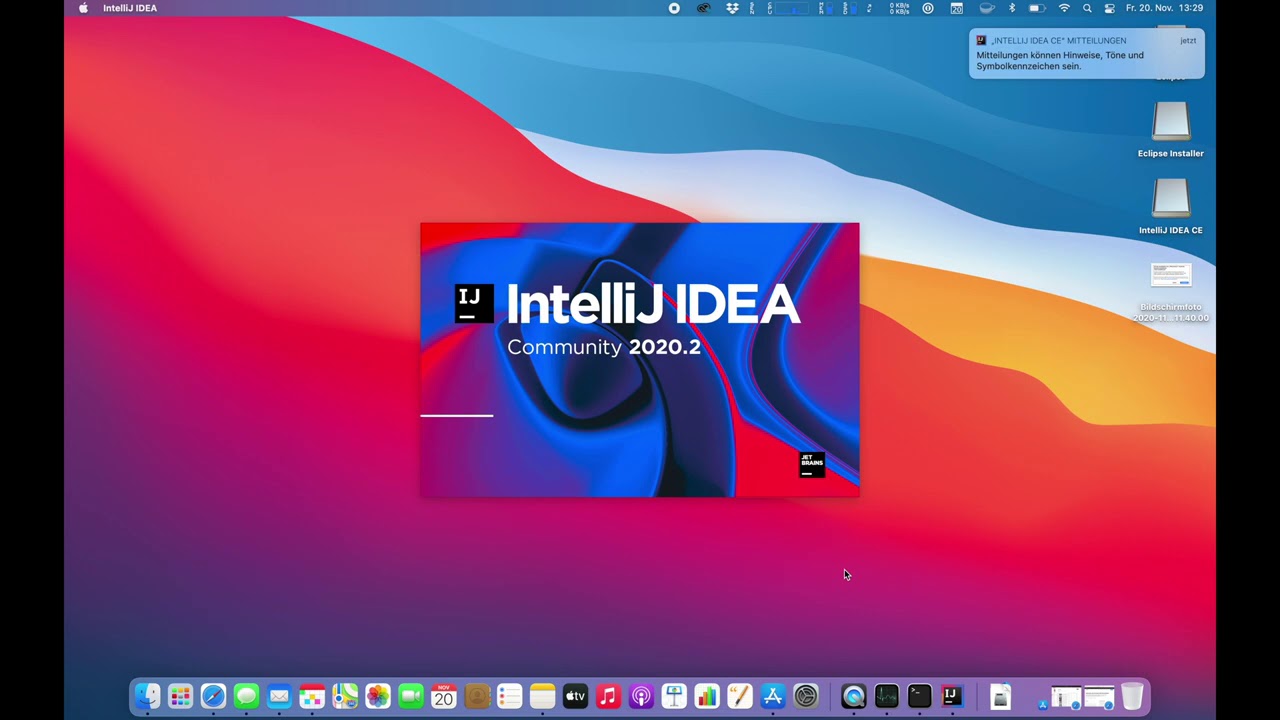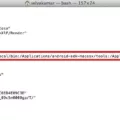Are you a Mac user looking for an integrated development environment for Java development? Look no further than IntelliJ IDEA! IntelliJ IDEA is the perfect IDE for Mac users who need a powerful and feature-rich development platform.
IntelliJ IDEA is a cross-platform IDE that provides consistent experience on the Windows, macOS, and Linux operating systems. It’s available in two editions: Community Edition (free and open-source licensed under Apache 2.0) and Ultimate Edition (paid). Both editions provide all the basic features for JVM and Android development, but Ultimate Edition offers extra features such as advanced code analysis tools and web development support.
The installation process is straightforward; just download the installer from the JetBrains website, run it on your Mac, and you’re ready to go. You can also use the desktop shortcut if it was created during installation. After installation, open the IntelliJ IDEA app from the Applications directory or Launchpad to start coding!
If you’ve recently upgraded to a Macbook Pro with M1 Chip (like me!), you might find that IntelliJ IDEA works slower than expected on your new machine. To resolve this issue, make sure to configure Java Virtual Machine properly by following these steps:
1) Go to Preferences > Build, Execution, Deployment > Compiler > Java Compiler
2) Check the Use Project JDK option
3) In the JDK home path select /Library/Java/JavaVirtualMachines/JDK-14.[version].jdk/Contents/Home
4) Click OK
5) Restart IntelliJ IDEA
Once configured correctly, IntelliJ IDEA should run much smoother on your Macbook Pro with M1 Chip! And if you ever need help figuring something out or have any questions about using IntelliJ IDEA on your Macbook Pro with M1 Chip, feel free to reach out to our friendly support team at JetBrains – they are always happy to assist!

Does IntelliJ Work on Mac?
Yes, IntelliJ IDEA is available for macOS and provides a consistent experience across all platforms. It is designed to be platform-agnostic and works on Windows, macOS, and Linux operating systems. The Community Edition of IntelliJ IDEA is free and open-source, licensed under Apache 2.0. It provides all the features necessary for JVM and Android development.
Running IntelliJ on a Mac
To run IntelliJ IDEA on your Mac, you can use the Applications directory, Launchpad, or Spotlight. You can also run the idea.sh shell script in the installation directory under the bin. If a desktop shortcut was created during installation, you can also use that to launch IntelliJ IDEA.
In the Applications directory, look for the “IntelliJ IDEA” application and double-click it to launch it. Through Launchpad, click on the icon for “IntelliJ IDEA” and wait for the application to launch. To use Spotlight, press Cmd + Space and type in “IntelliJ IDEA”, then select it from the results list to open it.
If you want to run the idea.sh shell script in the installation directory under bin, go into your IntelliJ Installation folder and find bin > idea.sh, then right-click and select ‘Open with Terminal’ (or another terminal of your choice). In Terminal, enter ‘./idea.sh’ without quotes and press Enter to launch IntelliJ. The desktop shortcut will also work if one was created during installation; simply double-click on it to start up IntelliJ IDEA.
Can IntelliJ Be Used on an M1 Mac?
Yes, IntelliJ does work on M1 Macs. While the performance of IntelliJ may be slower on M1 Macs compared to non-M1 Macs, it is still possible to use it for developing Java projects. This can be helped by ensuring that the latest version of IntelliJ is installed, as well as making sure that your device has enough memory and storage for the project you’re working on. Additionally, there are some tips and tricks that can help improve performance such as reducing the number of plugins you have enabled, increasing the amount of memory allocated to IntelliJ, and disabling animations in settings.
Installing IntelliJ on a Mac
On Mac, IntelliJ is installed in the ~/Library/Application Support/JetBrains/Toolbox/apps directory. You can also locate it using the Finder or Spotlight by searching for “IntelliJ”.
Installing IntelliJ on a Mac M1 Device
To install IntelliJ IDEA on a Mac M1, first, you will need to download the installation package from http://www.jetbrains.com/idea/download/. Select the OS version and edition that is suitable for your needs. Once the download has been completed, double-click on the downloaded .dmg file. The installer will open and you can just drag IntelliJ IDEA to the Applications folder. You may be asked to enter your Mac’s username and password in order to complete the installation. After installation is complete, you can launch IntelliJ IDEA from the Applications folder or Launchpad.
Is IntelliJ Still a Free Software Option?
Yes, IntelliJ is still free. IntelliJ IDEA Community Edition and IntelliJ IDEA Edu are both free versions of the popular integrated development environment (IDE) from JetBrains. You can download and use them without any license or subscription. The Community Edition is an open-source IDE for Java, Groovy, Kotlin, Scala, and other programming languages, while the Edu version simplifies learning a language by providing guidance for users as they code. Both provide access to a wide range of development tools and frameworks, including support for debugging and version control.
Reasons for IntelliJ Running Slow on Mac Computers
IntelliJ can become slow on macOS due to various reasons. One of the more common reasons is that antialiasing is enabled, which can cause the IDE to become sluggish and unresponsive. Antialiasing is a graphical feature that smooths out edges in text and other graphical elements, however, it requires additional processing power and can cause performance issues on certain systems. To disable antialiasing, open the Settings menu in IntelliJ and navigate to Appearance & Behavior > System Settings > Appearance. Under the Advanced tab, uncheck the box for Enable Antialiasing. This should provide a noticeable performance boost for the IDE. Additionally, you may want to reduce or disable some of the extra features that are enabled by default in IntelliJ such as code folding or code completion. These features can also take up additional resources and may be causing your system to slow down.
Creating a Project in IntelliJ for Mac
To create a project in IntelliJ for Mac, begin by launching IntelliJ IDEA. If the Welcome screen opens, click New Project. From the list on the left, select Empty Project. Enter a name for the new project and adjust its location if necessary. It is recommended to select the Create Git repository option in order to place the new project under version control. Finally, click Create to finish creating your new project.
Uninstalling IntelliJ from a Macbook Pro
To uninstall IntelliJ from your Macbook Pro, follow these steps:
1. Open Finder and go to the Applications directory.
2. Find the IntelliJ IDEA application and drag it to the Trash.
3. Open Finder again and go to the ~/Library/Application Support/JetBrains/ directory. Inside this directory, delete the folder that corresponds to your version of IntelliJ (e.g., IntelliJIdea2022.3).
4. Next, go to the ~/Library/Caches/JetBrains/ directory and delete the folder that corresponds to your version of IntelliJ (e.g., IntelliJIdea2022.3).
5. Finally, empty the Trash to complete the uninstallation process.
Conclusion
Overall, IntelliJ IDEA is a powerful and versatile IDE that can be used on Windows, macOS, and Linux operating systems. It has a Community Edition that is free and open-source and provides all the basic features for JVM and Android development. For Macbook users, it can be accessed by running the idea.sh shell script in the installation directory under the bin or using the desktop shortcut if it was created during installation. Unfortunately, some recent Macbook Pro with M1 Chips have experienced issues with IntelliJ running slowly, but this issue should not generally be experienced by other Macbook models.













